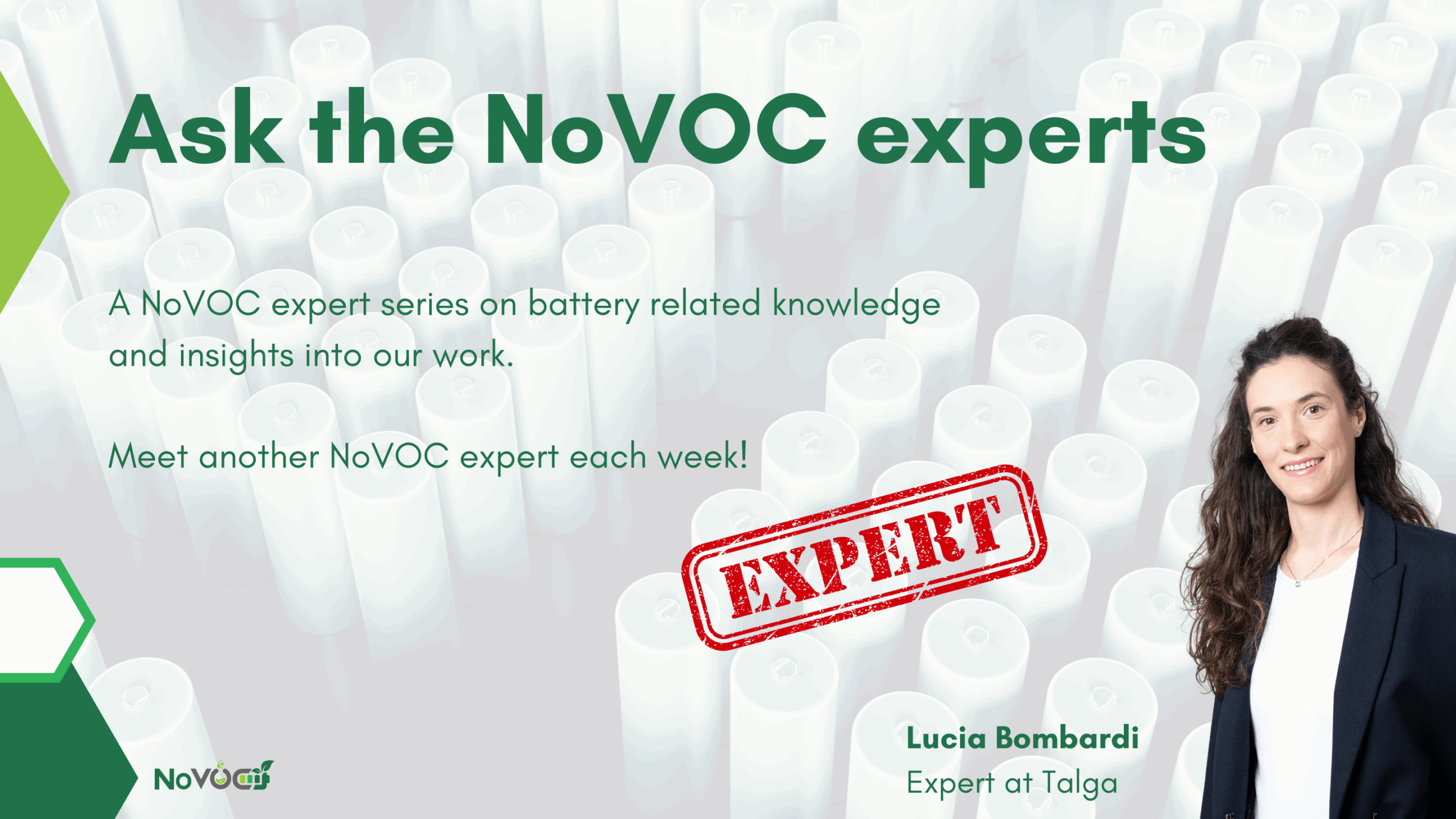
NoVOC “Ask the expert” series with Lucia Bombardi from Talga
Which materials are inside a lithium-ion battery, and what do they do?
Lithium-ion batteries might look simple on the outside, but inside, they’re made up of carefully chosen materials that each play an important role. The two key parts are the anode (negative side) and the cathode (positive side), which store and release energy when the battery charges and discharges.
The anode is often made from materials like graphite or advanced composites like silicon-carbon, which can hold lots of lithium ions to boost battery performance.
The cathode typically contains materials like nickel, manganese, and cobalt (NMC811), which help release lithium ions when the battery is in use, providing the power needed to run devices or electric vehicles.
Between these layers is a separator (to prevent short circuits) and an electrolyte (to help lithium ions move back and forth).
In the NoVOC project, we’re working to make these materials even more effective and sustainable by eliminating harmful chemicals from the battery manufacturing process.
At Talga, we develop innovative anode materials that improve battery efficiency, lifespan, and charging speed—all while supporting NoVOC’s goal of creating environmentally friendly, VOC-free batteries. By understanding how these materials work together, we’re helping to power the future with cleaner, safer, and more sustainable energy.


